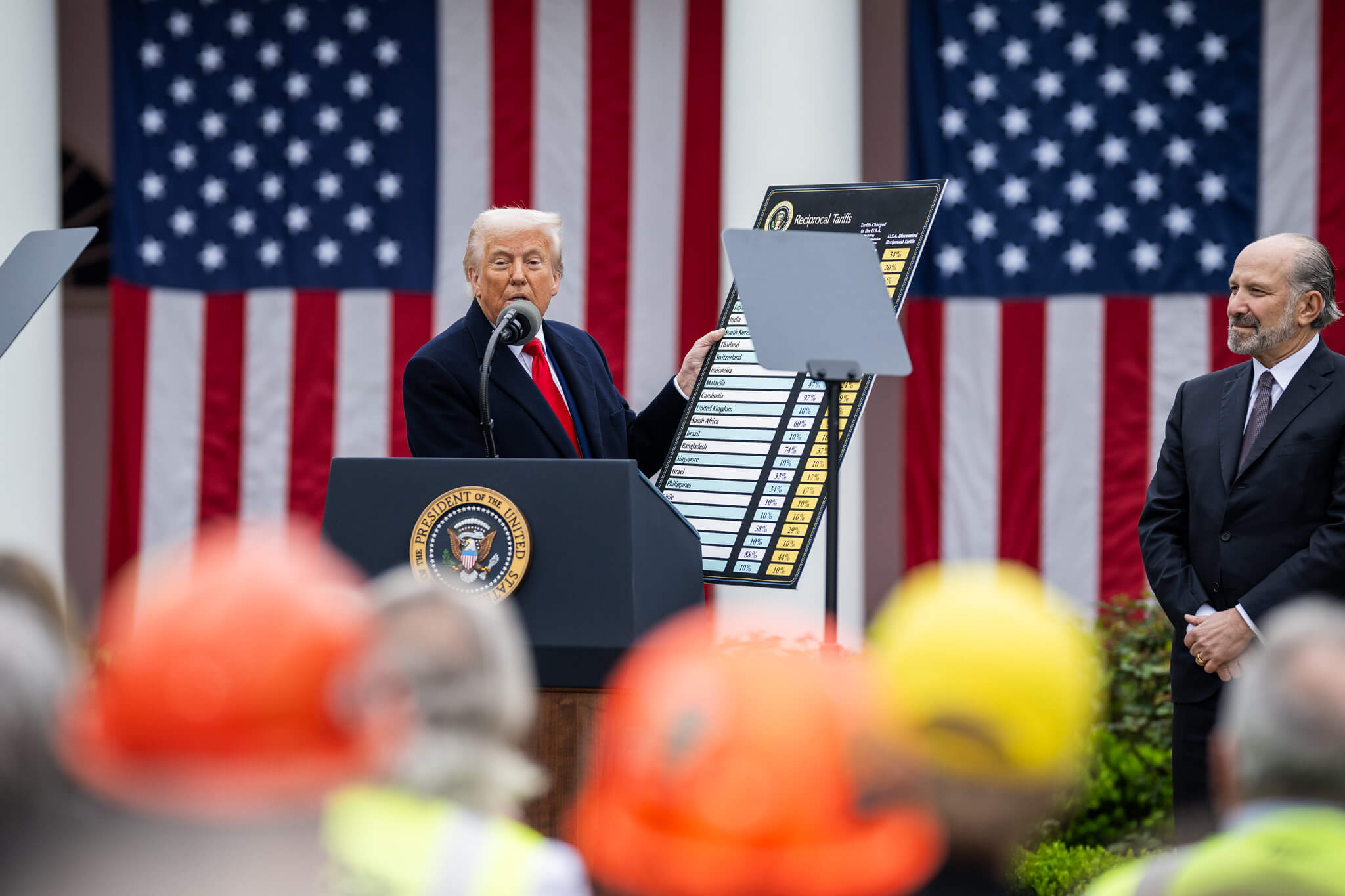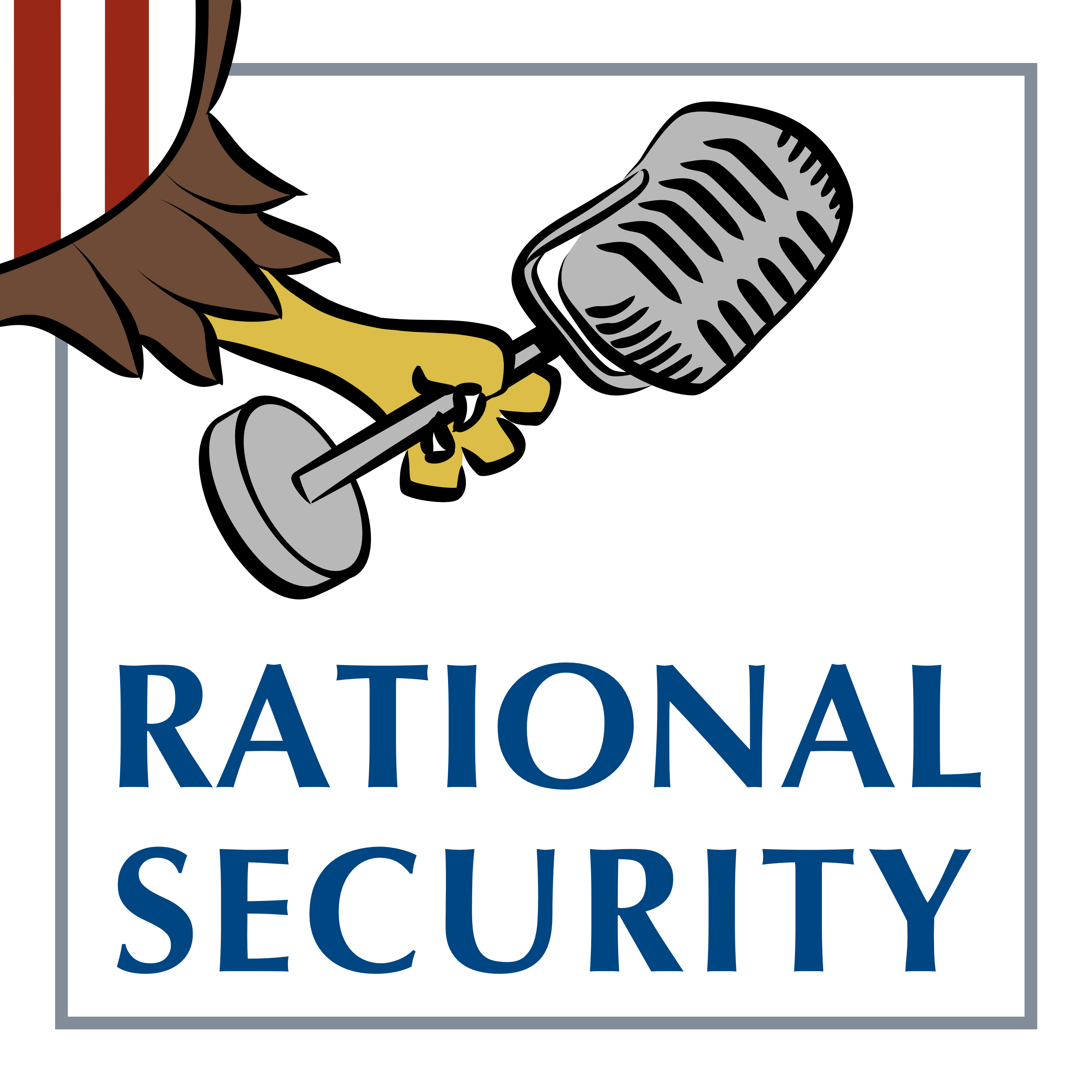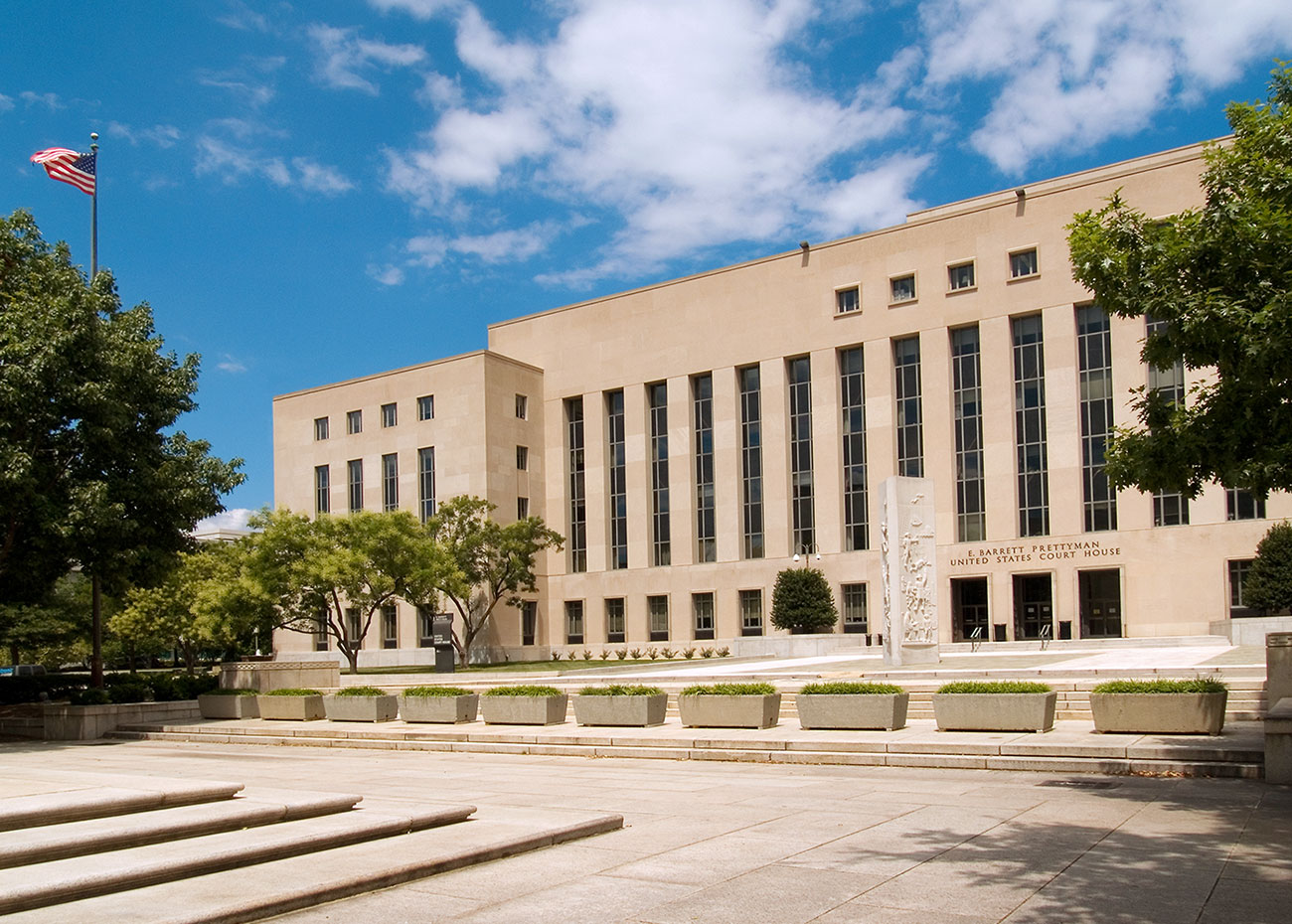IEEPA Authorizes Asset Freezing, Not Seizing

Published by The Lawfare Institute
in Cooperation With

On Nov. 5, the Supreme Court will hear arguments in Learning Resources, Inc. v. Trump, a challenge to Trump’s tariffs. The case centers on the validity of the tariffs as an exercise of an executive authority bestowed by the International Emergency Economic Powers Act (IEEPA)—and its outcome concerns business lawyers, not just experts in the constitutional separation of powers. Jack Goldsmith and Bob Bauer have considered how the Court might resolve the issues in light of its general approach to statutory interpretation. My contribution, at best incremental to theirs, will focus on the specifics of federal sanctions law.
My point here is that a state taking somebody’s money is different from barring them from using their property. A monetary charge is conclusive and compels the surrender of ownership. An indefinite ban on benefiting from ownership produces real pain, but it does not irrevocably sever the tie between an owner and its property. This distinction mattered to Congress when it adopted IEEPA, the statute at the heart of this case. Two very limited exceptions aside, IEEPA does not authorize confiscations of alien property. That Congress added limited exceptions through the 2001 Patriot Act and 2024 REPO Act confirms that IEEPA lacks a general authority to seize, as opposed to freeze, property.
A tariff, like a tax, permanently separates people from their property. Moreover, there is nothing in IEEPA that would distinguish taxation from imposing tariffs. Other than residing in different titles of the federal code, they are the same. The question before the Court in Learning Resources is whether a levy of a tax or tariff is like a confiscation. At a minimum, treating a tax or tariff as different from a confiscation is an important interpretive issue that, under the Court’s current doctrine, should be decided by Congress, not the judiciary.
Background
What does IEEPA say about tariff authority? As Goldsmith puts it, “IEEPA authorizes the President to ‘regulate ... importation ... of ... any property in which any foreign country or a national thereof has any interest by any person’ in order ‘to deal with any unusual and extraordinary threat’ to U.S. national security, foreign policy, or the U.S. economy from outside the United States.” Learning Resources involves several questions, but I focus here on whether Trump’s executive orders represent an exercise of the power to regulate importation of property in which a foreign person has an interest. Others can wrestle with whether the tariffs relate to any threat to the United States originating from abroad and what court has first-instance jurisdiction to consider their validity.
In V.O.S. Selections, Inc. v. Trump, the U.S. Court of Appeals for the Federal Circuit decision that the Court combined with Learning Resources in its grant of review, four dissenters argued that a tariff is one way to regulate importation of goods (property). That IEEPA does not use the word “tariff” or “tax” does not matter.
Is it relevant that no other president has based tariffs (or taxes) on IEEPA? For the dissenters in V.O.S. Selections, the distinction between the tariffs imposed by Trump and asset freezes—the exclusive use of IEEPA until now—is insignificant. They maintain that their reading of the statute presents no issue that Congress hasn’t already addressed with sufficient clarity. Specifically, they believe that the Trump administration’s extension of IEEPA’s regulatory power does not present a major question of statutory interpretation under West Virginia v. EPA, the source of the major questions doctrine (MQD).
The doctrine holds that issues of statutory interpretation that have a significant impact on the scope or tools of a regulatory program are for Congress, and not the courts, to decide. The MQD does not apply here, the dissenters argue, because just before Congress enacted IEEPA, a lower court had answered this question under that statute’s predecessor, the Trading With the Enemy Act (TWEA), to uphold tariffs. Congress embraced that then-recent decision when it crafted IEEPA out of TWEA, thus answering the major question.
The V.O.S. Selections dissenters, however, missed an important point about the differences between TWEA and IEEPA. From 1917 (the adoption of TWEA in World War I) until 1977 (the enactment of IEEPA), TWEA gave the executive branch the authority to interfere with the property of foreigners. My colleague Aditya Bamzai has done the research charting the origins and evolution of that law. TWEA originally conformed to what was thought to be the international law of war, which allows forfeitures of enemy-owned assets as incidental to armed combat. During the first two terms of the Roosevelt presidency, the executive and Congress extended the executive’s authority to instances of economic emergencies, not just wars. It did not restore the power to confiscate foreign property, however, until 1940, after the outbreak of World War II but before the United States entered into the war. Once the war ended, Congress left TWEA’s confiscatory power in place.
These moves under Roosevelt detached the executive’s TWEA powers from international law as well as international affairs. During the Cold War, it didn’t seem to matter. The international conflicts and crises spawned by superpower rivalry seemed rough substitutes for the kind of war that nuclear weapons had made unthinkable.
Things changed, however, in the wake of Watergate and the fall of Vietnam. The more promiscuous declarations of national emergencies during the Johnson and Nixon years motivated Congress to cut back on the executive’s powers. This was the time of Congress’s general clawback of its constitutional prerogatives, as expressed by the 1973 War Powers Resolution, the Trade Act of 1974, the Congressional Budget and Impoundment Control Act of 1974, and the Foreign Sovereign Immunities Act of 1976. IEEPA similarly trimmed the executive authorities that TWEA had supplied.
First, Congress amended TWEA so that it applied only to declared wars, returning to its 1917 origins. Second, it built into IEEPA—which deals with international emergencies in the absence of a declared war—a narrower definition of what counts as an emergency. TWEA until 1977 had applied to any national emergency declared by the president, without any limiting definition. IEEPA, while recycling the term “national emergency,” limits the authorities it bestows to a threat that “has its source in whole or substantial part outside the United States.” Thus the 1933 bank holiday that Roosevelt imposed using TWEA authority no longer fits under IEEPA, unless a banking crisis has its source outside the country.
Even more significant for Learning Resources, IEEPA dropped the power to impose asset confiscations of alien property. As enacted, it provided that presidents may seize, as opposed to freeze, property only through TWEA, which applies exclusively to declared wars. For other emergencies, only IEEPA’s more limited regulatory powers were available. The 2001 Patriot Act modified this slightly, applying the seizure power to the perpetrators of armed attacks on the United States using 9/11 as a template. The 2024 REPO Act added a new exception for Russian state assets to facilitate financial support for Ukraine. But otherwise, IEEPA provides no authority for the government to take, rather than freeze, aliens’ property.
IEEPA and Confiscations
To be clear, IEPPA does not forbid confiscations in so many words. Rather, the reservation of asset forfeiture for TWEA, along with excising the express authority from IEEPA, creates a clear inference that Congress did not mean to approve this power in IEEPA. The later restoration of confiscation authority under the Patriot and REPO Acts, with stringent limitations on its use, also strongly supports an inference that the general regulatory powers that IEEPA conveys to the executive do not extend to confiscation. The subsequent behavior of presidents from Carter to Biden, including the first Trump administration, is consistent with that inference.
The distinction between seizures—forfeitures of an alien’s property and the assumption of title by the United States—and asset freezes—sequestering property but not changing its ownership—surfaced during the recent debate over sanctioning Russia for its invasion of Ukraine. The Biden administration imposed a comprehensive freeze, most significantly covering several billion dollars of Russian central bank deposits in U.S. financial institutions. Members of Congress and prominent personalities urged the administration to do more. They wanted Russia’s assets, specifically the Russian central bank money, to go to Ukraine, not to remain in fiscal limbo under the freeze order. In testimony before Congress and in blog posts, I (among others) argued that IEEPA did not permit this.
The Biden administration and Congress apparently agreed with me. The executive never converted the Russian asset freezes into seizures. Congress in 2023 adopted the REPO Act to supply the confiscation authority that IEEPA lacked, but only with respect to Russian property. So far, neither the Biden nor the Trump administration has used this power.
What does this history have to do with the issue of whether the MQD applies to interpreting the word “regulate” as extending to “tax” or “impose a tariff”? It points to two conclusions, one nerdy and technical, the other more conceptual. In particular, the history undercuts the significance of the lower court case on which the Learning Resources dissenters relied and confirms that extension of IEEPA to taxing and tariffing really is a major question under the MQD.
First, the law nerd part. In 1975, two years before the enactment of IEEPA, the Court of Customs and Patent Appeals (CCPA), the ancestor of today’s Federal Circuit, ruled in United States v. Yoshida Inter., Inc. that TWEA authorized a tariff adopted by President Nixon to address a balance of payment crisis. In a sense, it was an easy outcome, because Congress in the Trade Act of 1974 had just expressly granted the president this power. To confirm that the tariff had been valid when adopted, not just going forward, the CCPA ruled that Nixon’s levy also fit under TWEA.
But the TWEA that Yoshida interpreted included the power to seize property whenever the president declared a national emergency, even if no war, hot or cold, was involved. When Congress adopted IEEPA two years later, it addressed the question of confiscatory power and determined that the new statute would not authorize it. IEEPA overruled the premise of Yoshida, the executive’s possession of a legislatively approved power to take property in pursuit of public policy, rather than implicitly endorsing it.
Next come conceptual arguments. The government in Learning Resources might argue that, whatever the status of confiscations under IEEPA, taxing and tariffing are not takings of property. Rather, they are levies imposed to implement policy and steer private transactions. Moreover, they are exactions authorized by law, rather than, in the case of forfeitures, exercises of punitive power in responses to transgressions.
To describe IEEPA-based tariffs (or any taxes that a president might impose) as authorized by law is to beg the question that MQD tees up: Does a general reference to regulation include an ad hoc power to invent tax or tariff policy on the fly? Recognizing such a power is a big deal—a powerful weapon for the executive and a fearsome problem for those on whom this weapon might be trained. It marks a profound departure from a regime that only ties up property, rather than taking it irrevocably.
The government might argue that tying up property—the normal result of IEEPA freezes—can cause every bit as much economic pain to the owner as would an exaction that results in a permanent transfer of money. But when the United States acquires property, through tariff, tax, or confiscation, different consequences apply. With a freeze, the government, under its existing authority, may reverse itself and lift the restriction without going back to Congress to get permission. With a lawfully imposed tax or tariff, in contrast, the government cannot restore the exacted funds to the owner without obtaining a new authority from Congress. In this sense, exactions and confiscations are the same.
Bamzai, in an amicus brief filed last week in Learning Resources, argues that TWEA’s bestowal of a power “to regulate . . . importation” encompassed a power to levy tariffs, that Congress saw this power as distinct from its provision for the confiscation of alien property, and that the later translation of the quoted phrase into IEEPA implies ongoing authorization of tariffs under the new statute. His argument, however, overlooks a distinction very much in mind of the Congress that adopted IEEPA while amending TWEA. Congress took care to put war powers and other regulatory authorities in different categories, with only TWEA addressing the former. It did not intend to smuggle war powers into IEEPA.
As Bamzai acknowledges in both his brief and his earlier article, when Congress in the First War Powers Act of 1941 added regulation of imports to the list of presidential authorities covered by TWEA, it understood tariffs as a logical extension of a general war power to ban commercial intercourse with an enemy. It relied on early Supreme Court decisions that had permitted the president to levy tariffs during wartime exceptionally as part of a set of powers that international law attributed to a state. That authority survives in TWEA after the adoption of IEEPA, but only in the context of declared wars. The IEEPA powers are limited to international emergencies that fall short of war.
As the exclusion of confiscation from the list of IEEPA authorities indicates, Congress in 1977 meant to draw a line between war powers and other means for the executive to shape international relations. Giving a war powers gloss to IEEPA’s use of “regulate” would defeat that intention. Both confiscation and tariffs (as well as taxes) are war powers that a declaration of war can trigger in circumstances where Congress has not spoken clearly. Absent a declaration of war, the MQD requires a more stringent reading of IEEPA.
***
As far as I know, the Trump administration has not yet contended that its authority to “regulate” under IEEPA includes the power to subsidize (give money away), dispensing with the need to obtain an appropriation from Congress. The government’s position amounts to a claim that IEEPA transfers the power to tax (and perhaps spend?) to the executive, notwithstanding the historical vesting of these powers in Congress. All the executive needs, it maintains, is a (perhaps judicially unreviewable) presidential finding of the existence of a threat to U.S. interests emanating from abroad.
These are the kinds of arguments that the MQD was meant to override. The government, along with the four V.O.S. Selections dissenters, deploys a broad and abstract reading of “regulate,” not the kind of interpretive parsimony that MQD is supposed to impose, to find extraordinary authorities within IEEPA. It hands a major, mostly unlimited power to take money from the exporters of goods to the United States, effectively taxing U.S. consumers without any evidence that Congress signed off.
Perhaps the MQD, properly applied in Learning Resources to reject the view of the V.O.S. Selections dissenters, would prevent a wise and benevolent president from providing the right mix of taxing and spending that the nation needs. Under our system, however, the MQD bars the judiciary from giving the executive a free pass to make such fundamental choices without clear congressional buy-in. IEEPA is not that, and the Court should not let it serve as a basis for the tariffs. As West Virginia v. EPA held, the issue is one that Congress, not courts, must decide.





